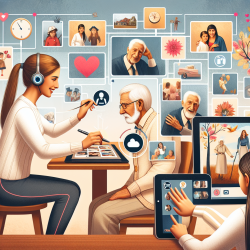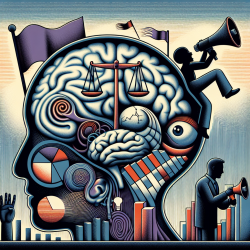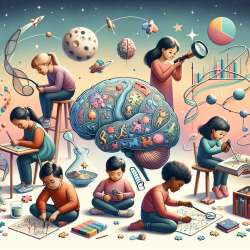Introduction
In the evolving field of speech-language pathology, leveraging technology to enhance therapeutic outcomes is paramount. A recent scoping review titled "Remembering the Past with Today’s Technology: A Scoping Review of Reminiscence-Based Digital Storytelling with Older Adults" offers insightful findings that can be adapted for use with children and adolescents in therapy settings. This blog explores how practitioners can utilize these findings to improve their skills and outcomes.
Understanding Reminiscence-Based Digital Storytelling (DST)
Reminiscence-based DST involves creating digital narratives that incorporate personal memories, often through multimedia elements like text, images, and audio. While the study focuses on older adults, the principles of reminiscence and storytelling can be adapted for younger populations, especially in fostering communication skills and emotional well-being.
Key Findings from the Research
- Emotional and Social Benefits: DST was found to enhance emotional well-being and social connectedness among older adults. These benefits can be translated into pediatric therapy by helping children articulate their experiences and emotions through storytelling.
- Cognitive Engagement: The process of creating and sharing DSTs can stimulate cognitive functions. For children, this can mean improved narrative skills and memory retention.
- Intergenerational Engagement: Although understudied, intergenerational engagement in DST projects showed potential for mutual benefits. In a school setting, pairing children with older mentors for storytelling projects could foster empathy and communication skills.
Implementing DST in Practice
Practitioners can incorporate DST into their therapeutic practices by following these steps:
- Identify Objectives: Determine what you aim to achieve with DST. Is it to improve communication skills, enhance emotional expression, or foster social connections?
- Select Appropriate Tools: Use accessible technology that children are comfortable with, such as tablets or computers, to create their digital stories.
- Encourage Creativity: Allow children to express themselves freely through their stories. This can include drawing, voice recording, or selecting personal photos.
- Facilitate Sharing: Create opportunities for children to share their stories with peers or family members, enhancing social skills and confidence.
Encouraging Further Research
While the study provides a solid foundation, further research is needed to explore the full potential of DST in pediatric therapy. Practitioners are encouraged to document their experiences and outcomes, contributing to a growing body of evidence on the effectiveness of DST in various age groups.
Conclusion
Reminiscence-based digital storytelling is a promising tool that can be adapted for use with children to improve communication skills, emotional well-being, and social connections. By integrating these practices into therapy, practitioners can create engaging and effective interventions that resonate with young clients.
To read the original research paper, please follow this link: Remembering the Past with Today’s Technology: A Scoping Review of Reminiscence-Based Digital Storytelling with Older Adults.










